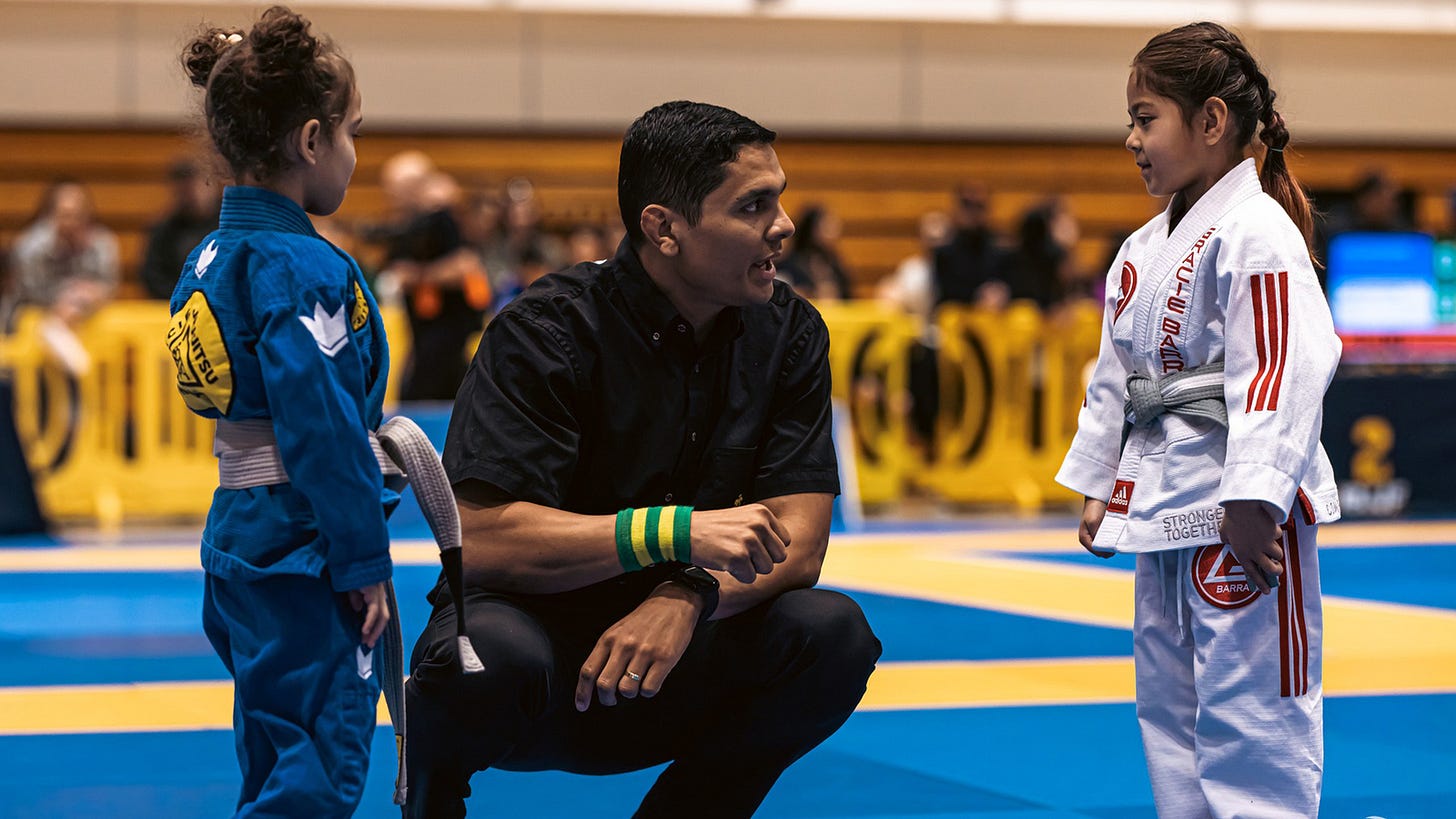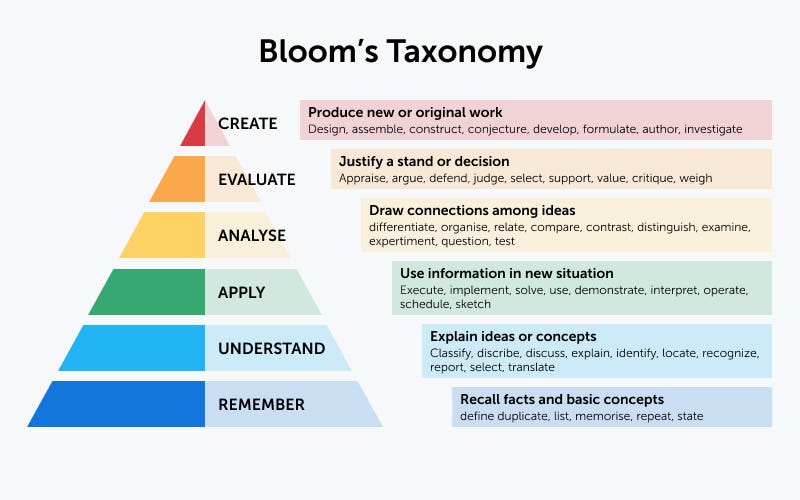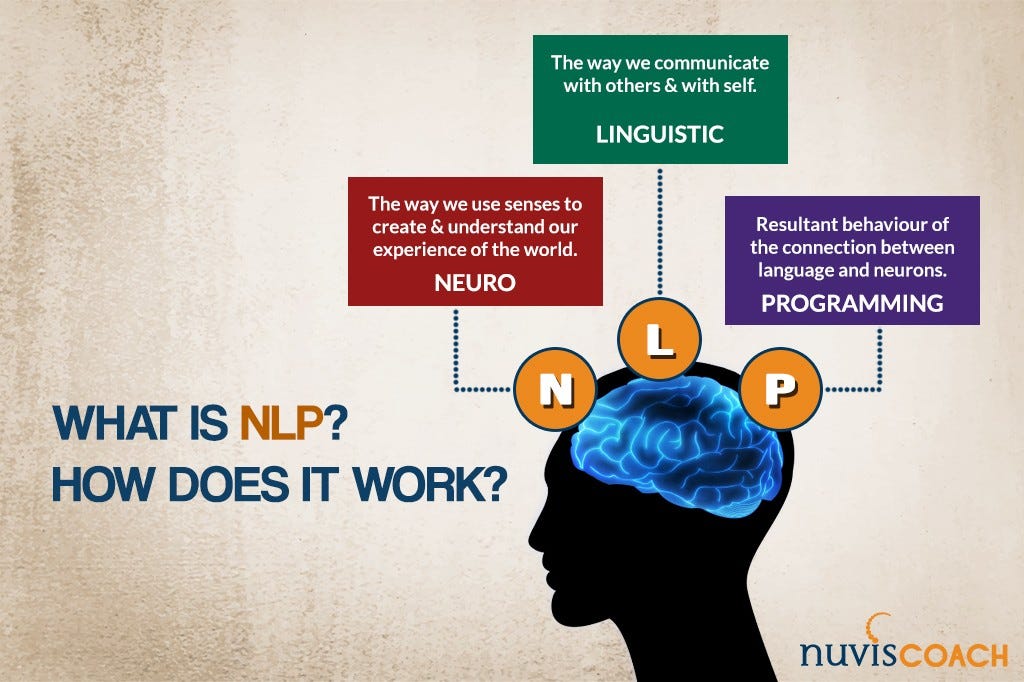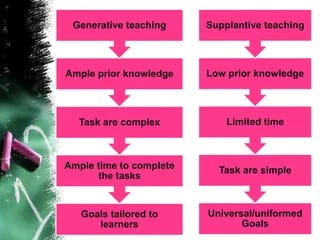Curriculum & jiu jitsu: Crafting to your students needs
We're back to talk more about curriculum design and teaching strategies in jiu jitsu.
Note: This article is also available as an episode of Punchsport Pagoda. This is simply the written version of that episode.
Last time I went over key concepts when creating a curriculum and how to be mindful about managing it. Today we'll be focusing our efforts on understanding how to do an analysis on the learner group we want to teach. Specifically on how we can improve the way we design instruction around jiu jitsu specific techniques. Like last time, this is less of a “how to make a curriculum” as that’s a simple and easy thing you can replicate, however understanding how and why various components of a curriculum design work the way they do is arguably far more important.
And that’s what I’ll be trying to educate you on today. So as with the previous episode today’s discussion is focusing on curriculum, learning theory, and practical strategies that can make a real difference in a jiu jitsu program’s design.
This analysis today will be justifying and proposing learning strategies using a taxonomical analysis with the goal to enhance alignment between intended, enacted, and experienced curriculum, those three key components I discussed last time. We'll be using the topic of a double leg takedown technique as the contextual framing for this discussion.
After this discussion on the intended curriculum and taxonomical analysis, it will be followed by analysis of the learner group characteristics, concluding with justification of an instructional strategies based on this analysis.
Background
So let’s first start with the foundation. The Alliance Kids Jiu Jitsu program which I discussed last time was part of the Alliance Korea curriculum. It was created to give kids under 14 the skills and knowledge they need to train and compete in jiu jitsu. It’s a structured curriculum made up of core topics, broken into modules, with techniques branching off from each one. What’s great is that it doesn’t just rely on repetition—it uses both formative and summative assessments to track progress. These assessments happen in live and semi-realistic sparring, which gives instructors a clear view of how each child is developing and where they might need support.
So to begin we should first have a discussion on the intended curriculum of teaching a double leg takedown. This elected topic of a double leg takedown technique can be categorized as a localized curriculum. While learning jiu jitsu as a whole can be considered centralized learning due to its holistic nature, the process of leaning an individual technique would fall under localized learning. This is because it involves specific steps, positioning, and education utilizing a specific skill set to do so.
It is important to note that while this technique is a localized learning component, it still contributes to the overall understanding for jiu jitsu as a centralized learning endeavor. Proficiency in localized skills ultimately contributes to a broader competency of jiu jitsu. The instructional design of the intended curriculum is one that is heavily controlled with evidence of learners’ progress and learning outcomes monitored.
To determine a taxonomical analysis, consideration of the goals of the learning must be taken into account. The learner’s goal is to not only learn the process of the technique but to practically apply it in realistic context. It has been argued by researchers that breaking the goals into steps allows for the components of the goal to be identified which in turn can then be classified using a taxonomy model. In the context of this jiu jitsu technique, it is requisite for a learner to be able to remember and understand the components of the technique as well as be able to assess when to apply it.
Additionally, understanding the value such a technique provides to their overall jiu jitsu development on top of being open to guidance and feedback on their execution of the technique is necessary. Finally, developing the necessary motor skills and skilled movements to execute the technique is required to properly learn its usage.
So, it becomes clear these requirements for learning fall within what Bloom and his co-researchers identified as the domains of learning; cognitive (knowledge), affective (attitude & behavior) and psychomotor (skills). Therefore, it leads to the determination that Bloom’s taxonomy is best suited for this form of learning.
Bloom’s Taxonomy
Bloom’s taxonomy helps provide a hierarchal structure for organizing and sequencing learning objectives and instructional activities. As the instruction moves from an initial introduction of concepts, it becomes increasingly more complex. The procedure is to utilize grips, body positioning, leverage, and timing to then cause the opposing person to become off balance and be forced onto the ground. With regards to the taxonomy’s cognitive domain, learners acquire knowledge and understanding of the technique. They first remember the steps and key elements associated such as the initial setup, footwork, and control of the opponent. Next they are trained to understand the principles and mechanics behind the techniques usage allowing them to grasp the effectiveness of its use in various situations. Later, as they apply the technique in controlled practice drills, the learners develop proficiency in executing it.
Moving to the psychomotor domain of the taxonomy, which can best be explained as the process where learners progress from imitation to manipulation, precision, and articulation. In the context of jiu jitsu, they observe and imitate the movements as shown by the instructor carefully studying the footwork, body positioning and timing. After consistent practice, they manipulate their own bodies to execute the technique with fluidity and control. It is crucial for attention to detail to occur so as to achieve precision, ensuring that each aspect of the technique is performed correctly. As they gain proficiency, learners then articulate their skills by seamlessly integrating the technique into live training and sparring sessions. Through this repetition and refinement, the development of muscle memory and the ability to execute the technique instinctively is attained.
The affective domain also plays a vital role in the learning process. At the receiving level, learners recognize the importance and relevance of the technique as it applies to jiu jitsu. They understand that mastering the technique is essential for gaining advantageous positions and control of opponents. Responding to the techniques involves displaying a willingness to learn and practice and being receptive of the application. Additionally, they learn to value the strategic use of the technique within the context of jiu jitsu. As such, they then are able to recognize its potential benefits towards setting up submissions, securing dominant positions, or controlling where the jiu jitsu match is taking place. As they develop this, they are then able to organize and integrate the technique into their overall game plan, thus showing understanding when and how to effectively apply it. Characterization can occur when the learners are able to execute the technique with consideration of their training partners’ safety and well-being, thus embodying sportsmanship. Bloom’s taxonomy promotes a balanced and holistic approach to learning, fostering both knowledge acquisition and skill development with regards to this jiu jitsu technique.
Knowing the learner group
By using the selected taxonomy, there is a need for analysis to be done on the intended learner group in order for it to be effectively used. Researchers in education have argued that knowing learning characteristics with respects to instructional design is necessary as it will help shape the design of the goal outcomes within the intended curriculum. Hence, employing the framework analysis of the four components, namely cognitive characteristics, physiological characteristics, affective characteristics, and social characteristics, is considered a more suitable approach for selecting strategies in the intended curriculum, as opposed to relying on the similarities-differences framework.
As there is no entry requirement for learners to participate in the Alliance Kids Jiu Jitsu program, we can identify the learner group as learners who are children who have at minimum zero prior knowledge within the contexts of jiu jitsu. However, it is possible for some learners to hold prior knowledge that can apply to the technique and its learning process such as experiences in similar sports like wrestling, judo, or even gymnastics. There are methods for an instructor to attain that knowledge and determine the relevance to the context of jiu jitsu. This is done through non-verbal communication through the display of different jiu jitsu belt rankings. Under the International Brazilian Jiu Jitsu Federation’s guidelines there are belt stripes and belt colors to indicate an individual’s experience and knowledge within jiu jitsu . Additionally, information sheets are used as part of the enrollment process along with a direct interview and discussion between the child’s parent(s) and the head instructor so as to determine the goals of the parent and learner as well as assess their suitability for the program. The information gained from this can help the instructor identify age, as well as interpret any cultural or gender differences among the individual students based off the personal details provided.
In addition, it should be noted that there are learning preferences which an individual learner would choose if they were given a choice. As jiu jitsu is a subject that focuses heavily on physical movements, the Neuro-Linguistic Programming (NLP) is most applicable of a system to consider. NLP situates around the learner favoring visual, auditory, or kinesthetic forms of learning. Visual learners, as implied by the name, prefer to learn by seeing through visual observation. Auditory learners prefer to learn through instruction and lectures on this selected topic. Kinesthetic learners prefer to learn through doing the targeting objectives. Each of these apply to the context of jiu jitsu as an instructor is able to give visual, auditory and kinesthetic learning opportunities throughout the course of learning session. Visual instruction is provided through demonstrations, while auditory instruction is provided in conjunction with this to elaborate key concepts and details. Finally, kinesthetic learning is afforded through practice time for drilling and realistic application via sparring sessions. Understanding these learning preferences can better serve towards
Furthermore, research has emphasized the importance of learner analysis as a fundamental step in instructional design. They noted that cognitive characteristics play a significant role in the learning process and that assessing the capabilities and previous knowledge of the learner is essential. When applied to a jiu jitsu program it is important to consider their understanding of basic concepts related to jiu jitsu and their ability to grasp new techniques. In order to identify these characteristics, instructors can use verbal communication to determine and interpret comprehension of the topic of focus.
By identifying these cognitive differences, the instructor can adjust the content, pacing and complexity to ensure optimal learning. Physiological characteristics were also noted as a key characteristic to consider. Children participating in this jiu jitsu program vary in terms of age, size, strength, coordination, and agility. This information of the learner group can be attained through observation of the individual learners by the instructor. It’s important to assess these characteristics as these factors influence their physical capabilities and limitations when performing the technique of focus.
Considering the physical development of each child and adapting the approach accordingly is necessary as well as modifications to accommodate such physiological differences. Affective characteristics are best defined as those that encompass emotional and motivational aspects of learning. When applying this to a kids’ jiu jitsu setting, a child’s interest, enthusiasm, and self-confidence in learning a specific technique can play a significant role in ensuring the learning outcome. It is possible to identify these characteristics through observation of the learner’s demeanor and behavior as well as through direct communication. Finally, social characteristics are also significant within this learner group. Social dynamics occur naturally among children, as well as in the instructor-student relationship.
As such, peer interactions and group dynamics can impact motivation and participation on top of skill development. Much like affective characteristics, social characteristics can be identified through observation and communication with the learner. Additionally it is not uncommon for children to sign up for jiu jitsu programs alongside their friends, so identifying this in the communication with parents prior to enrolment would aid in determining this.
This learner analysis highlights that the learners are children with diverse experiences, meaning that the learning activities can be aimed towards how to employ these different experiences to share among the other learners so that the learning is more diverse. With regards to inclusivity, the intended curriculum is designed to cater to all learner groups, regardless of any variances in cultural or socioeconomic background. This is seen through the non-restrictive requirements employed in the jiu jitsu gym on these factors. The only form of discrimination in assignment of class time based off age group indicated on the gym schedule. Therefore it is not necessary to focus on any specific culture groups as jiu jitsu is a multicultural sport practiced across a diversity of nations.
Instructional strategies
By using Bloom’s taxonomy, instructional strategies can be proposed so as to enhance the alignment among the intended, enacted, and experienced curriculum with regards to children learning a double leg takedown for jiu jitsu. To help further this design decision, consideration on the learner group characteristics has been taken into account as well as the important factor of how learners can be engaged while in pursuit of the learning outcomes. This strategy is structured so as to scaffold learners, guiding them from grasping basic concepts to engaging in increasingly complex problem-solving.
In order to do this, the focal point of information processing, attention should be given to both the learner’s processing of information as well as facilitation of the learner’s processing. This builds off of tthe distinction between ‘supplantive’ (teacher-centered) and ‘generative’ (learner-centered) strategies, as well as how each helps attain the intended learning outcome as part of an effective design for instruction.
Supplantive strategies involve providing learners with the information and guidance that is necessary to perform a double leg takedown. This approach is particularly important for beginners and young learners who may require more explicit instruction on the technique. Supplantive strategies aim to facilitate the learning of core knowledge and skills at a foundational level. In the case of the technique highlighted in this paper, instructors can demonstrate the technique while explaining key components that make it effective and work within the context of jiu jitsu. Additionally they can break down the movements into manageable steps and chunks in order to better highlight important areas of focus. Instructors can also provide learners with visual aids through repeated live demonstrations to enhance understanding. This approach ensure that’s the learners have a clear and well structured foundation of knowledge to build upon.
In comparison, generative strategies aim to foster active engagement and encourage the learner to apply their knowledge in different contexts. This approach promotes critical thinking and problem solving which they would realistically encounter in the course of a jiu jitsu sparring session or competition. Problem-based learning is defined as an approach where learners are presented with realistic scenarios and problems related to the topic of knowledge. They work in a collaborative manner to analyze the situation, identify useful strategies, and apply their knowledge to find a solution.
In relation to the technique of focus, this method is a relevant strategy as it allows the learners to develop a deeper understanding of the technique and the various nuances to it in a realistic and practical fashion. In turn it also aids in the enhancement of their decision-making skills and overall experience in application of the technique. Thus it is recommended that a combined approach using supplantive and generative strategies should be employed. By doing so, instructors can provide a balanced approach towards instruction that supports both knowledge acquisition and the development of higher-order thinking skills in performing the technique.
In pursuit of aligning the intended, enacted, and experienced curriculum there must be careful consideration with regards to designing a cohesive and meaningful learning experience as part of the instructional design. Several principles of instructional design ahve been proposed by researchers that can help in this alignment process. They include gaining attention, informing the learners of the instructional objectives, stimulating recall of prior knowledge, presenting the content, providing guidance and practice, facilitating performance, as well as supplying feedback and assessing the performance. Gaining attention should be employed to ensure learners are engaged and focused, which in the case of teaching the technique of focus the instructor can use attention-grabbing techniques such as demonstrating the double leg takedown while highlighting its practicality or relevance.
In order to clearly inform the learners of the instructional objectives, the goals and outcomes desired when using the technique can be clearly articulated and explained to the learners. Next, to facilitate learning the learners should be provided with relevant information, which can come in the form of the instructor breaking down the technique into smaller components with explanations for each step thoroughly provided. In order to enhance retention, the learners should be provided ample practice time and opportunities to apply the technique in various scenarios. Feedback should then be provided to correct any errors and reinforce correct execution of it.
Moreover, the need for assessment is significant, and within the context of jiu jitsu this could involve evaluating the execution of the technique through formative assessments such as drills or simulated sparring situation. Lastly, the principle of enhancing retention and the transfer of knowledge should be considered. This can be found in the form of providing opportunities for the learners to practice the double leg takedown in realistic contexts, such as live sparring sessions or even competitions. This in turn creates connections between the technique and its application in different situations which can promote the transfer of learning.
So what did we discuss?
In summary, the incorporation of combined supplantive-generative strategy derived from Bloom’s taxonomic analysis fits well to enhance the alignment of the intended, enacted, and experienced curriculum for the selected topic of this paper. This approach helps to identify the targeted learner group of children in the pursuit of developing jiu jitsu technique skills. As jiu jitsu practitioners, the cognitive, psychomotor, and affective domains are important for the development of skills within the context of the sport. Through this, it is possible to then determine and use a model which can address the learning preferences of this group. As such, with this taxonomic analysis and the recommended strategies, alignment concerning the intended, enacted, and experienced curriculum for the technique of focus can be enhanced.
Moreover, there is potential to supplant the topic of this paper with other jiu jitsu techniques and still use this recommended approach. Furthermore, replacing the learner group from children to adults also appears to be feasible with minor adjustments required as to instructional language choices and activities. The argument for this is that there is a near universal approach to teaching techniques due to how the intertwining system of techniques are connected to each other, as well as there being uniformity in techniques across age groups with the only variances coming in what techniques are deemed permissible in competitions by the IBJJF and other organizational bodies. With that said, there is limited literature regarding instructional design development within the specific focus of jiu jitsu, which means further exploration on this topic is needed.
In the end, it’s all about alignment—making sure the intended curriculum (what we plan to teach), the enacted curriculum (what we actually teach), and the experienced curriculum (what the kids actually learn) are all working together. When we get that alignment right, we create a learning environment that’s not just effective, but empowering.








